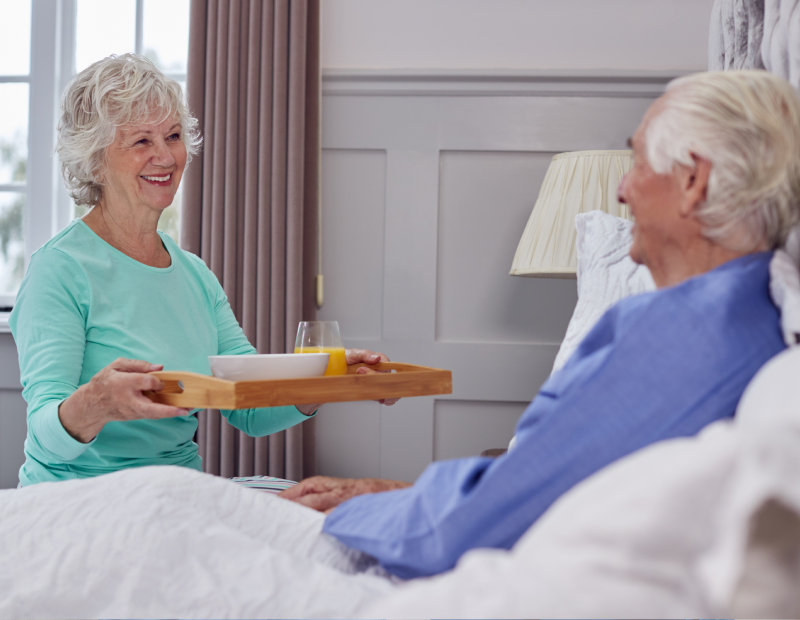Importance of Daily Living Activities
ADLs vs. IADLs Overview
Understanding the distinctions between Activities of Daily Living (ADLs) and Instrumental Activities of Daily Living (IADLs) is crucial in providing comprehensive care for seniors. Both ADLs and IADLs play significant roles in assessing the level of care an individual may require, particularly for veterans who may benefit from Bravo Personal Care’s full-service non-medical in-home care in Gold River, CA.
ADLs consist of the essential physical tasks required for basic self-care. These activities are fundamental and involve routine tasks such as bathing, dressing, eating, and mobility. On the other hand, IADLs encompass more complex activities that require planning, cognitive skills, and organizational abilities. These include tasks like managing medications, preparing meals, handling finances, and using transportation.
The clear distinction between ADLs and IADLs can be summarized as follows:
| Category | Tasks | Explanation |
|---|---|---|
| ADLs | Bathing | Basic hygiene like washing and grooming |
| Dressing | Choosing and putting on clothes | |
| Eating | Feeding oneself independently | |
| Mobility | Moving around and transferring (e.g., from bed to chair) | |
| IADLs | Meal Preparation | Cooking and preparing food |
| Medication Management | Taking medications correctly | |
| Handling Finances | Managing money and paying bills | |
| Transportation | Using public transportation or driving |
Assessing both ADLs and IADLs is essential in understanding a senior’s overall capability to live independently and safely. Health care professionals use various evaluation methods, such as the Katz Index of Independence in ADLs and the Lawton-Brody IADL Scale, to determine the functional status of older adults (A Place for Mom).
Recognizing the differences between ADLs and IADLs helps in planning personalized care and support services. For instance, veterans requiring assistance can benefit from structured care plans that address their specific needs, whether it be help with daily grooming or more complex tasks like managing household chores. For more information, check out our comprehensive guide to non-medical home care in Sacramento.
To further understand the impact of these activities on senior care, explore our articles on how activities of daily living (ADLs) keep seniors independent and instrumental activities of daily living (IADLs): improving quality of life for seniors.
Understanding Activities of Daily Living
In the realm of senior care, understanding the distinction between Activities of Daily Living (ADLs) and Instrumental Activities of Daily Living (IADLs) is crucial. Let’s delve into these two categories to understand their importance in providing comprehensive care.
ADLs Definition & Examples
Activities of Daily Living (ADLs) refer to the basic tasks necessary for self-care. These are fundamental activities that an individual must perform on a daily basis to live independently and thrive. According to WebMD, ADLs typically encompass the following six categories:
- Eating: The ability to feed oneself without assistance.
- Dressing: Choosing appropriate clothes and putting them on.
- Bathing/Personal Hygiene: Washing oneself and maintaining personal hygiene.
- Toileting: Getting to and from the toilet and performing associated hygiene.
- Continence: The ability to control bladder and bowel functions.
- Mobility: Moving from one place to another, for example, getting in and out of bed or a chair.
| ADL Category | Example Activities |
|---|---|
| Eating | Feeding oneself, managing utensils |
| Dressing | Selecting clothes, putting them on |
| Bathing/Hygiene | Showering, brushing teeth |
| Toileting | Using the restroom, cleaning afterward |
| Continence | Controlling bowel and bladder movements |
| Mobility | Walking, transferring in and out of bed |
These tasks are essential for basic survival and quality of life, and they are often used to assess a senior’s level of independence. For a deeper dive into how ADLs maintain independence, check out our article on how activities of daily living (adls) keep seniors independent.
IADLs Definition & Examples
Instrumental Activities of Daily Living (IADLs) are more complex tasks that go beyond basic self-care. These activities are necessary for living independently in a community setting and require higher-level thinking and organizational skills. As Golden Age Companions explains, IADLs include tasks such as:
- Cooking: Preparing meals independently.
- Using Transportation: Navigating to destinations, including using public transport.
- Housework: Performing tasks like cleaning, laundry, and maintenance.
- Managing Finances: Handling bills, banking, and budgeting.
- Medication Management: Understanding and taking medication correctly.
- Using Technology: Operating phones, computers, and other devices.
| IADL Category | Example Activities |
|---|---|
| Cooking | Preparing and cooking meals |
| Using Transportation | Driving, using public transport |
| Housework | Cleaning, doing laundry |
| Managing Finances | Paying bills, budgeting |
| Medication Management | Taking medications as prescribed |
| Using Technology | Using phones, computers |
The ability to perform IADLs builds on the skills needed for ADLs. For instance, being able to dress independently (an ADL) is a prerequisite for doing laundry independently (an IADL). Understanding the distinction between ADLs and IADLs helps in creating thorough care plans tailored to each individual’s needs. For more information on the significance of IADLs, visit our article on instrumental activities of daily living (iadls): improving quality of life for seniors.
By identifying and supporting seniors’ abilities in both ADLs and IADLs, we can provide comprehensive care that promotes independence and enhances the quality of life. For those navigating the process of choosing the right senior care provider in Elk Grove, understanding these categories is indispensable.
Assessment of ADLs and IADLs
Assessing Activities of Daily Living (ADLs) and Instrumental Activities of Daily Living (IADLs) is essential for creating an effective care plan for seniors, especially veterans receiving non-medical in-home care. Understanding these activities helps determine the level of support needed for daily functioning and overall wellbeing.
Professional Evaluation Methods
Healthcare professionals use standardized tools to assess ADLs and IADLs. These evaluations provide comprehensive insights into a senior’s capabilities and help in planning appropriate care strategies. Some common assessment methods include:
- Katz Index of Independence in Activities of Daily Living: This tool measures a senior’s ability to perform six basic functions: bathing, dressing, toileting, transferring, continence, and feeding.
- Lawton-Brody Instrumental Activities of Daily Living Scale (IADL): This scale assesses more complex activities necessary for independent living, such as using the telephone, shopping, food preparation, housekeeping, laundry, transportation, medication management, and financial management.
- Functional Independence Measure (FIM): This broad assessment evaluates physical, psychological, and social functions.
| Assessment Tool | ADLs Assessed | IADLs Assessed | Professional Use |
|---|---|---|---|
| Katz Index | 6 Basic ADLs | No | Healthcare providers |
| Lawton-Brody Scale | No | 8 IADLs | Geriatric specialists |
| FIM | Multiple functions | Multiple functions | Rehabilitation specialists |
Assessing ADLs and IADLs is crucial in diagnosing potential medical issues and planning interventions. Regular evaluations, as suggested by WebMD, can improve care prognosis and provide timely support.
Family Caregiver Involvement
Family caregivers play a vital role in the assessment process by providing detailed observations about the senior’s daily performance. Their involvement includes:
- Providing Reports: Family caregivers can offer valuable insights into a senior’s daily routines, struggles, and progress. These reports are critical for understanding the person’s health and wellbeing over time (24hrcares).
- Assisting with Self-Reporting: Encouraging seniors to self-report their abilities can initiate conversations about their ADLs and IADLs, especially when cognitive functions are intact.
- Recognizing Changes: Sharing any changes in ADLs or IADLs with healthcare providers helps identify potential medical or cognitive issues promptly (A Place for Mom).
Professional assessments combined with caregiver input create a holistic view of the senior’s abilities. This collaborative approach is fundamental in how Bravo Personal Care Services ensures quality care for seniors.
Understanding the difference between ADLs and IADLs in senior care, and involving both professional and family assessments, helps in crafting tailored care plans that enhance senior independence. Whether through veterans aid & attendance programs or other support services, ensuring comprehensive assessments is key to providing effective non-medical in-home care. For more detailed insights on this topic, explore our comprehensive guide to non-medical home care in Sacramento.
Impact of ADLs on Seniors
Significance of ADL Abilities
Activities of Daily Living (ADLs) encompass essential self-care tasks that seniors perform each day. These activities are vital for maintaining independence and quality of life. The fundamental ADLs include:
- Bathing: The ability to clean oneself.
- Dressing: The capacity to select appropriate clothing and dress independently.
- Eating: The ability to feed oneself.
- Toileting: The use of the restroom and hygiene maintenance.
- Transferring: Moving from one position to another (e.g., from bed to chair).
- Continence: Control over bladder and bowel functions.
ADL abilities are crucial indicators of a senior’s functional health and well-being. They enable seniors to live independently and remain engaged in their daily routines. For family caregivers and professionals, assessing ADL capabilities helps determine the level of care and support required. Understanding how activities of daily living (ADLs) keep seniors independent can aid in maintaining an elderly individual’s dignity and autonomy.
| ADL Task | Importance |
|---|---|
| Bathing | Maintains personal hygiene and prevents skin conditions |
| Dressing | Enhances dignity and self-sufficiency |
| Eating | Ensures proper nutrition and energy levels |
| Toileting | Maintains dignity and comfort |
| Transferring | Prevents falls and enhances mobility |
| Continence | Ensures comfort and hygiene |
Effects of Declining ADL Skills
As seniors age, physical and cognitive declines can impact their ability to perform ADLs effectively. The inability to perform these tasks independently can be an early indicator of cognitive conditions such as dementia. Loss of ADL skills may come later in the progression of dementia compared to IADL skills, but it’s still a significant marker of declining health.
Declining ADL abilities can lead to:
- Increased Dependency: Seniors may require assistance with basic tasks, reducing their independence.
- Safety Risks: Inability to perform tasks like bathing or transferring can increase the risk of falls and injuries.
- Health Issues: Poor personal hygiene and inadequate nutrition from challenges in bathing or eating can result in health complications.
- Emotional Impact: Loss of independence can lead to feelings of frustration, depression, and reduced self-esteem.
According to the NCBI Bookshelf, various conditions contribute to the decline in ADL performance, such as musculoskeletal issues, neurological conditions, aging, cognitive decline, and social isolation. Additionally, hospitalization and acute illnesses have been associated with a significant decline in ADL abilities.
Recognizing and addressing these declines early is essential for maintaining a senior’s quality of life. Tailored care plans focusing on these needs can help mitigate declines and provide the necessary support. Learn more about how Bravo Personal Care Services ensures quality care for seniors by implementing comprehensive care plans and evaluations.
For more insights into the impact of cognitive and physical declines on daily living, visit our article on instrumental activities of daily living (IADLs) and their role in senior care. Understanding the differences between ADLs and IADLs helps ensure that we provide holistic and effective care to our seniors.
Implementing Care Based on ADLs
Care Planning for ADL Support
When it comes to senior care, understanding the distinction between ADLs and IADLs is pivotal for creating an effective care plan. Activities of Daily Living (ADLs) encompass essential tasks such as eating, bathing, dressing, toileting, and mobility. These basic skills are fundamental to an individual’s day-to-day life and their ability to live independently.
At Bravo Personal Care, we prioritize a comprehensive assessment to understand a senior’s capabilities in performing ADLs. This evaluation guides the development of a personalized care plan that addresses their specific needs. The Katz Index of Independence in Activities of Daily Living is one tool commonly used to evaluate these skills, as it includes six key areas:
- Bathing
- Dressing
- Toileting
- Transferring
- Continence
- Feeding
Recognizing any decline in these areas can help determine the level of supervision, therapy, and support required. For instance, if a senior struggles with mobility, care plans might include physical therapy, mobility aids, or home modifications to make their environment safer and more accessible.
Utilizing ADL Evaluations for Care Decisions
Evaluating a senior’s ADL skills is not just about identifying current needs, but also anticipating future requirements. This forward-thinking approach ensures that the care plan remains relevant as their condition changes. Professional evaluations, such as the assessments conducted by healthcare providers at Bravo Personal Care, include detailed observations and standardized tests to determine the level of assistance required.
To illustrate how we use these evaluations, consider the following table which reflects hypothetical data from a senior’s ADL assessment:
| ADL Task | Independence Level | Assistance Needed | Recommended Support |
|---|---|---|---|
| Bathing | Partially Independent | Standby Assistance | In-Home Care Aide |
| Dressing | Dependent | Full Assistance | Caregiver Support |
| Toileting | Independent | None | N/A |
| Transferring | Partially Independent | Minimal Assistance | Grab Bars, Physical Therapy |
| Continence | Dependent | Full Assistance | Incontinence Products |
| Feeding | Independent | None | N/A |
This table helps caregivers and family members visualize where support is most needed and allows for a comprehensive guide to be crafted, ensuring all aspects of daily living are addressed.
By using ADL evaluations to make informed care decisions, we can outline specific steps to enhance a senior’s quality of life. These steps might include specialized services like:
- Post-hospitalization care
- Veterans aid
- Light housekeeping
In summary, understanding and implementing care based on ADLs ensures that seniors receive tailored support, whether through professional in-home care, therapeutic interventions, or adaptive aids. By meticulously assessing and addressing these daily living activities, we help seniors maintain independence and improve their overall well-being (NCBI Bookshelf).
Considering IADLs in Senior Care
Instrumental Activities of Daily Living (IADLs) are critical for maintaining a senior’s independence. Understanding and supporting these complex activities can significantly impact the quality of life for elderly individuals.
IADL Support Considerations
IADLs involve tasks that facilitate independent living and include activities such as managing finances, medication management, and using transportation. These activities require higher cognitive function and organizational skills compared to basic Activities of Daily Living (ADLs). Identifying and addressing difficulties in IADLs is crucial for comprehensive senior care.
When considering support for IADLs, we focus on creating personalized care plans that take into account the unique needs of each individual. Our services may include:
- Financial Management: Ensuring bills are paid on time and budgets are followed.
- Medication Management: Organizing and reminding seniors to take their medications as prescribed.
- Meal Preparation: Planning and cooking nutritious meals to ensure proper nutrition.
- Transportation Services: Providing safe transportation to medical appointments and social activities.
These support services are essential for maintaining the independence and well-being of seniors. Our detailed guide on instrumental activities of daily living (iadls) and their role in senior care offers more insights on this topic.
Role of IADL in Daily Functioning
The ability to perform IADLs often determines whether a senior can live independently or requires assistance. Loss of these skills can signal the need for increased support or transition to assisted living arrangements (Better Health While Aging).
Below is a table illustrating the common IADLs and their relevance to daily functioning:
| IADL Activity | Description | Importance |
|---|---|---|
| Managing Finances | Paying bills, budgeting, and financial planning | Essential for independent living and financial stability |
| Medication Management | Taking medications correctly | Critical for health and chronic disease management |
| Meal Preparation | Planning and cooking meals | Ensures proper nutrition and health |
| Housekeeping | Cleaning and maintaining the home | Necessary for a safe and hygienic living environment |
| Shopping | Buying groceries and other essentials | Important for nourishment and daily needs |
| Transportation | Driving or arranging rides | Facilitates mobility and access to services |
| Communication | Using phones, email, and mail | Keeps seniors connected with family and services |
Supporting IADLs requires a combination of practical assistance and cognitive support. Family involvement and professional caregiving play pivotal roles in monitoring and assisting with IADLs. For more detailed information, refer to how activities of daily living (adls) keep seniors independent.
Incorporating IADL support into care plans allows us to provide comprehensive, person-centered care. This approach helps our veterans in Gold River, CA, maintain their independence for as long as possible. To learn more about our services and how we can assist, visit comprehensive guide to non-medical home care in sacramento.
Adapting Care for Changing Needs
Ensuring the well-being of seniors involves more than just meeting their immediate needs. It’s about recognizing and adapting to changes in their abilities over time. Here, we’ll discuss how to effectively adjust care plans and address declines in ADLs (Activities of Daily Living) and IADLs (Instrumental Activities of Daily Living).
Adjusting Care Plans
Adapting care plans is key to providing supportive and effective care for seniors. There are several factors to consider when making adjustments:
- Regular Assessments: Regularly assessing seniors’ capabilities can help identify any changes in their ability to perform ADLs and IADLs. Tools like the Katz Index of Independence in Activities of Daily Living and the Lawton Instrumental Activities of Daily Living Scale are widely used for these assessments (NCBI Bookshelf).
- Professional Evaluation: Engaging professionals such as physicians, physical therapists, and occupational therapists can provide comprehensive evaluations. These experts can determine the underlying causes of difficulties with ADLs or IADLs and create targeted treatment plans (Better Health While Aging).
- Family Involvement: Family caregivers play a crucial role in providing information about the senior’s daily routines and challenges. This information is vital for forming a care plan that addresses the specific needs of the individual (Bethesda Health).
- Customized Care Solutions: Adjustments may include increasing in-home care support, revising rehabilitation strategies, or changing medication regimens. For Veterans, exploring benefits through the Veterans Aid & Attendance Program can also be valuable.
Recognizing and Addressing Declines
Recognizing declines in ADLs and IADLs early allows for timely intervention, thus maintaining the senior’s quality of life and independence:
- Signs of Decline: Loss of ADL skills, such as bathing, dressing, and eating, often occur later in the progression of conditions like dementia, whereas a decline in IADL skills like managing finances or housekeeping can be an early indicator of cognitive impairment (Bethesda Health).
- Impact on Independence: The inability to perform ADLs significantly affects a senior’s independence and may result in the need for further rehabilitation, increased assistance at home, or placement in a long-term care facility (NCBI Bookshelf).
- Medical Evaluation: A change in ADLs or IADLs can indicate the need for a medical evaluation to identify any treatable causes or necessary medication adjustments (Bethesda Health).
- Holistic Approach: Addressing declines involves a holistic approach, considering not only the medical aspects but also the emotional and psychological well-being of the senior. Family support and professional counseling may be beneficial.
By understanding the importance of ADLs vs. IADLs and staying vigilant about changes in seniors’ abilities, we can effectively adapt care plans to meet their evolving needs. For more on this topic, explore our comprehensive guide to non-medical home care in Sacramento and learn how Bravo Personal Care Services ensures quality care for seniors.
| Assessment Tool | Focus Area |
|---|---|
| Katz Index | Basic ADLs |
| Lawton IADL Scale | Independent Living Skills |
Adapting care plans is an ongoing process that requires constant attention and flexibility from caregivers and family members. By leveraging professional evaluations, family input, and regular assessments, we can ensure that seniors receive the best possible care tailored to their specific needs.




